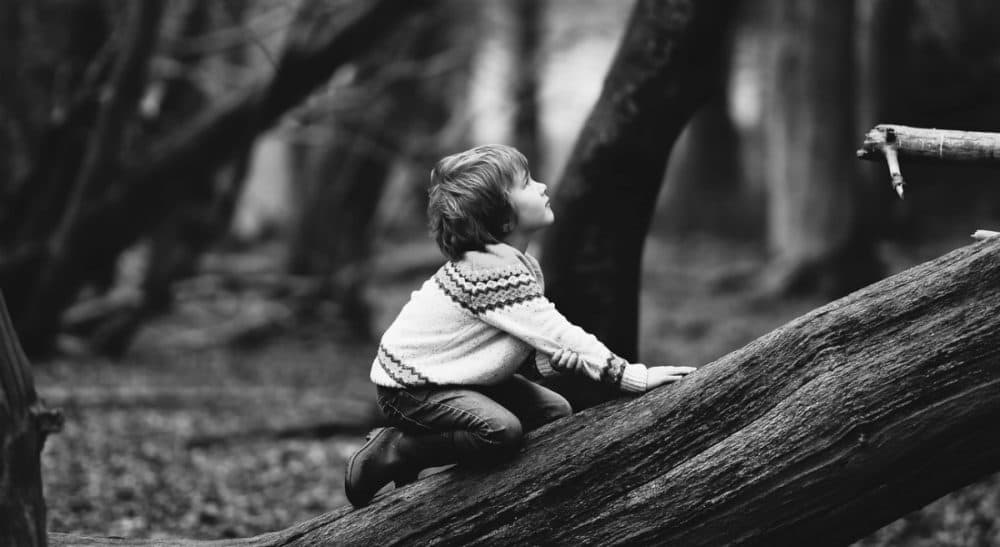Advertisement
No Fooling: Children Need Unbounded Outdoor Play

A parent once told me that playing in the earth and exploring nature was not going to get his 5-year-old son into Harvard.
I humbly beg to differ. Free play outdoors teaches a child how to imagine and solve problems and how to imagine a world outside the concrete confines of urban and suburban America. It also delays the onset of Nature Deficit Disorder, the condition identified by Richard Louv in his important book, "Last Child in the Woods."
...diversions don’t create imagination or foster creative learning. They don’t instill the thrill of discovery or the joys of freedom.
Free outdoor play involves learning about natural relationships and learning to see -- not just look. It teaches a child to question rather than to accept blindly. It also helps a child understand that there may be real and sometimes unfortunate consequences to even well-intended actions. Here I'm thinking of the time children released a three-legged frog back into a pond. Before the flap over whose turn it was to set it free, that creature had four legs.
This type of real-world experience is likely to make a child not just an excellent candidate for Harvard, if that’s the goal, but a more successful person. That seems a point worth emphasizing in this season when many parents are planning their children’s summer activities.
There has been much reported on the importance and relevance of play. But the play that I think is most meaningful isn’t the kind that is supervised on a playground, with the child exploring this structure or that, splashing in the sprinkler, rough-housing with other children.
To me, raised in the countryside of Vermont, ideal play is unbounded. No swing set or merry-go-round. No water-spitting steel snake. Such diversions don’t create imagination or foster creative learning. They don’t instill the thrill of discovery or the joys of freedom.
Many summer programs and other recreational opportunities for children are not terribly different from supervised time on a playground. Young people herd children from one managed activity to the next. The goal is to engage children in the same activity at the same time and to make sure that no one gets too excited. What are their charges really learning? What is anybody learning? Where are the formative relationships?
Advertisement
Play is not mindless activity, but it need not be highly organized, either. It should not be goal-oriented. Play lacks measurable consequences and is geared only to the realizable goals of the players. Play is where the players find joy in their explorations, creations and meanderings.

Enough with schedules and choreographed commitments. Summers, afternoons and weekends are for creative play and exploration. Perhaps not every child would consider catching frogs or hunting worms, observing butterflies or making ice cream by rolling a can down a hill a good time. But learning by doing (or not doing) is instructive for everyone, parents too.
I have made a career of managing farms, and on every one, the kids I’ve seen are mesmerized and want to explore it all. The same is true, it turns out, for their parents. This speaks to a universal longing to know, understand and be able to explicate some of the truly basic and essential experiences of life.
For children, the difference between observing creatures in a zoo or aquarium and catching a tadpole or a turtle in a pond is geometric. Feeling a live and wild animal wriggle in one’s palm is a different experience from seeing specimens in a controlled environment. Returning that creature back into its habitat, and doing it safely and with compassion, is equally important and rewarding. ‘Catch and release’ is a fundamental life experience that can only be learned in nature, and it is a core value of our humanity.
Feeling a live and wild animal wriggle in one’s palm is a different experience from seeing specimens in a controlled environment.
Dr. Scott Sampson’s prescription of a minimum of 30 minutes per day, three days per week of outdoor time is barely enough to satisfy a child’s natural curiosity. Life without the joys of the-out-of-doors is an empty plate, and we will end with a generation or two of hungry, nature-insecure children who will not be able to relate to or value the non-human biome that sustains our planetary home.
We should all take a page from a once well-read children’s classic, “How Tom Beat Captain Najork and His Hired Sportsmen,” by Russell Hoban. The hero, Tom, is a boy who’s constantly “fooling around” — that is, playing — and his no-nonsense aunt decides to teach him a lesson by bringing in the formidable Captian Najork and his hired sportsmen to beat him at games.
"The hired sportsmen brought out the ramp, the slide, the barrel, the bobble, the sneeding tongs, the bar, and the grapples. Tom saw at once that sneedball was like several kinds of fooling around that he was particularly good at. Partly it was like dropping things off bridges into rivers and fishing them out and partly it was like fooling around with barrels in alleys."
Needless to say, Tom wins — or perhaps I should say, he “gets into Harvard.”
